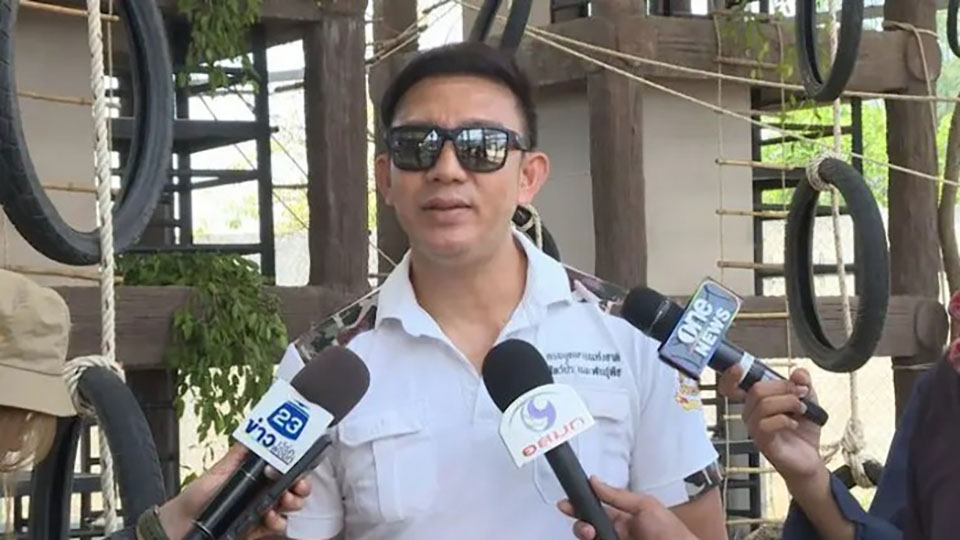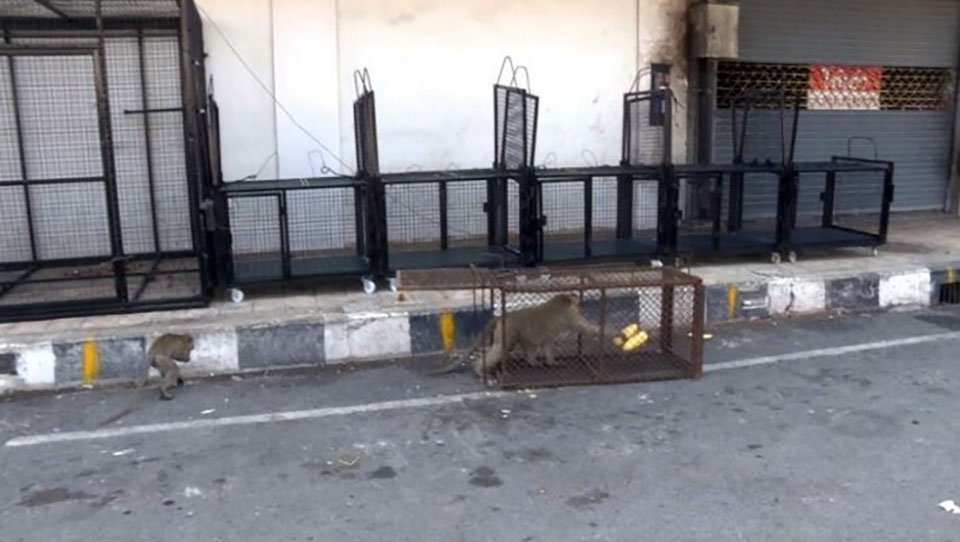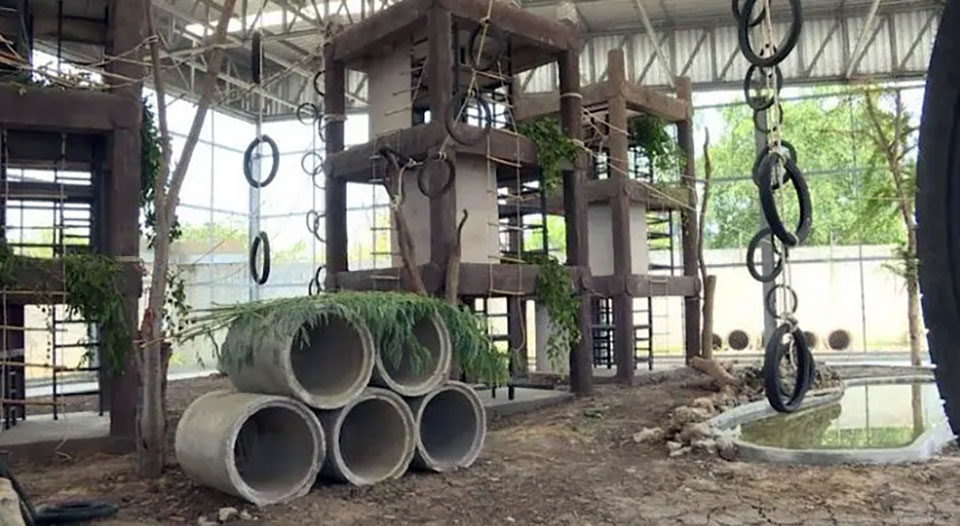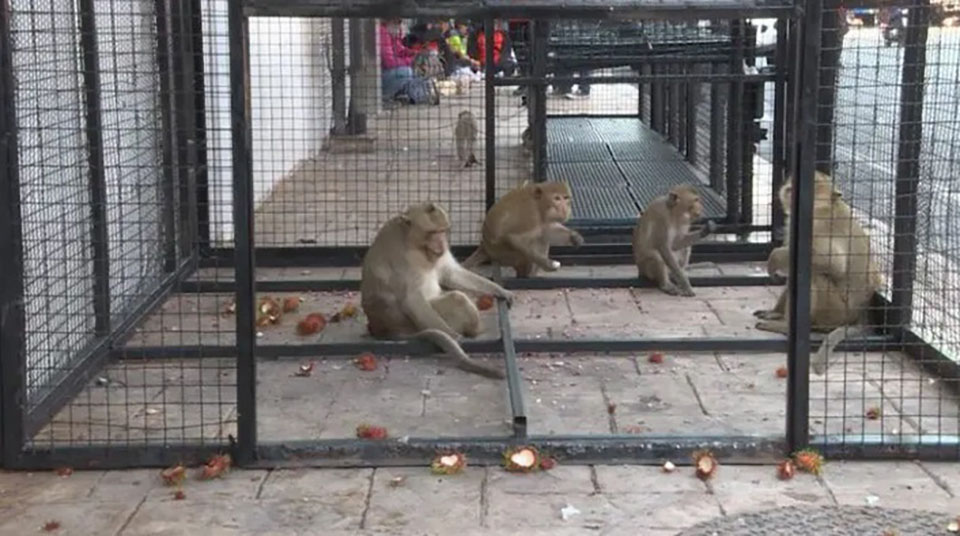
Local authorities began the operation to relocate unruly monkeys, roaming the Lopburi city to a temporary shelter as a short-term measure to tackle the monkey overpopulation following an incident of food snatching causing injury.
May 15 marks the official start of the monkey capture operation in Lopburi, Thailand. The initial phase aims to capture 20 monkeys to test the newly constructed cages at the Pho Khao Ton Monkey Shelter.
Large cages have been placed in front of the Lopburi Asia Hotel. Small pieces of food, such as peanuts, are scattered to attract the monkeys into the cages and to keep the monkeys inside for longer.
The operation faces two main challenges: the monkeys’ intelligence and the dominant behavior of some troop leaders. To address the latter, authorities have captured and removed the dominant monkey to prevent him from discouraging others from entering the cages.
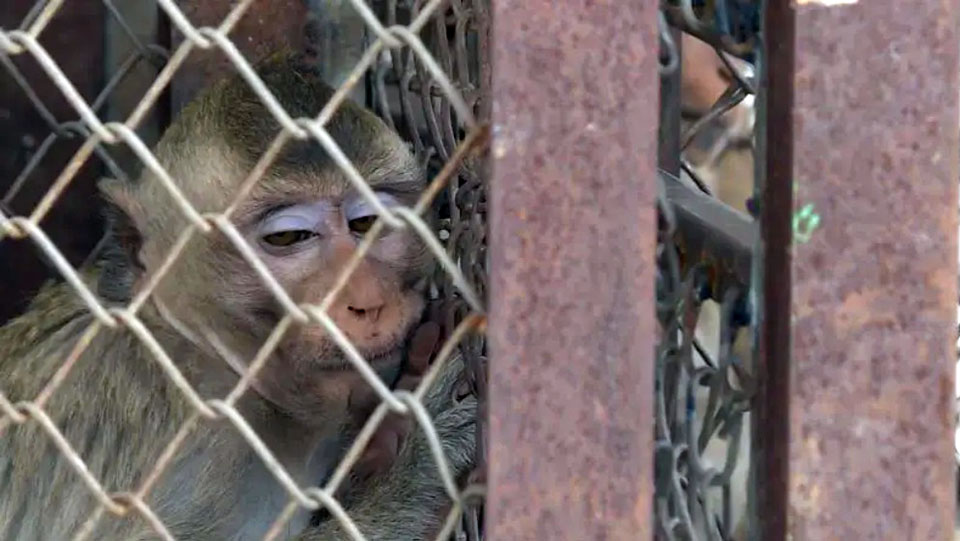
Some of the captured monkeys have already been neutered, as indicated by markings on their chests. These monkeys will undergo health checks before being placed in the cages. Those that haven’t been neutered will be prioritized for the procedure.
Mayor of Muang Lopburi, Jamroen Salacheep, the leader of the operation said monkeys are quick learners, so the capture locations need to be rotated regularly. The focus will be on monkeys that have separated from the main troop near the Phra Kan Shrine as they pose a direct threat to the community.
A nearby coffee shop owner, who has been in business for over 10 years, acknowledges the inherent mischievous nature of monkeys, especially with the growing population. However, she stresses the importance of finding ways to coexist with the monkeys.
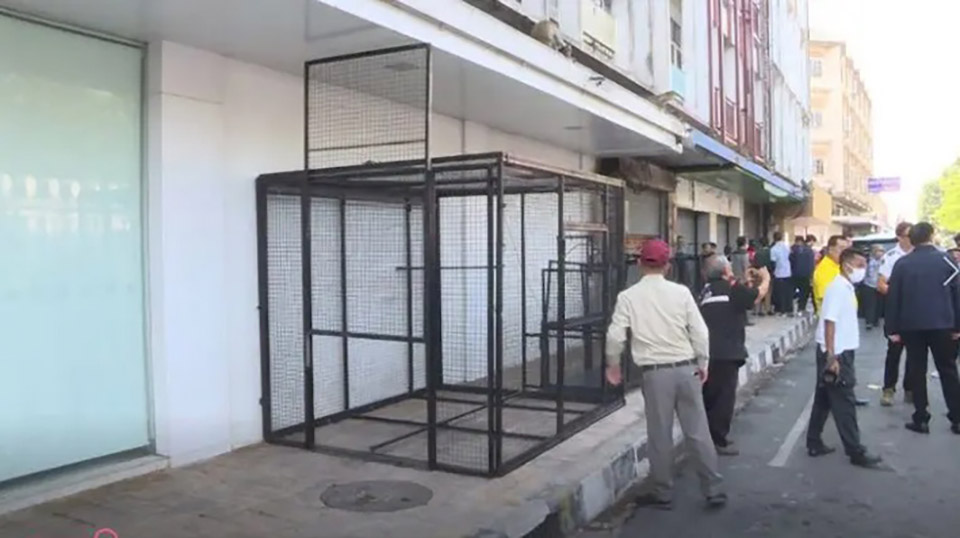
The initial batch of captured monkeys, estimated at 20-25, will undergo a seven-day testing phase to evaluate various aspects, including feeding and behavior modification. Once this phase is complete, the remaining monkeys from the troop will be captured and housed in the cages.
Specialized veterinarian of the Department of National Parks, Pattarapol Manee-orn explains that the provided equipment aims to divert the monkeys’ attention from escape attempts and engage them in activities instead. Additionally, the dietary plan will be gradually adjusted, as these monkeys have been accustomed to human food, leading to nutritional issues. Fiber-rich leafy greens will be incorporated into their diet.
Efforts are underway to expedite the preparation of the remaining cages for operation. Once all five cages are complete, it is estimated that they will have the capacity to house approximately 3,000 monkeys. (TNA)
